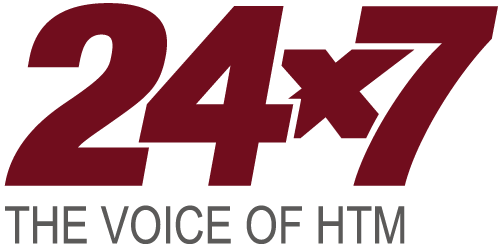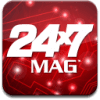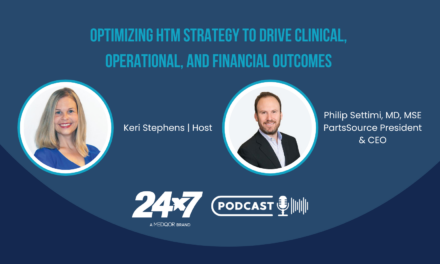Hospitals are implementing real-time location systems to speed up equipment retrieval and minimize disruptions that interfere with patient care.
By Shannon Housh
Real-time location systems (RTLS) and, more specifically, asset management are being leveraged by 25% of hospitals in the United States. This number is anticipated to grow annually at a rate of 17% between 2024 and 2032. Why? Hospitals are seeking to reduce equipment search time, prevent loss of valuable assets, optimize utilization rates, and ensure critical equipment is available when and where it’s needed.
Patients rely on their care teams and, by extension, the systems and equipment behind them to feel safe and supported throughout their hospital stays. It’s up to healthcare leaders to foster environments where patients, as well as staff, can feel confident that the right tools are available when they’re needed most.
The problem is that mobile medical equipment frequently goes missing. It’s constantly in use, which can lead to unintentional losses during the shuffle of the patient journey. Healthcare professionals are then left searching for the proper tools during potentially crucial points of patient care. This reality can not only negatively impact patient outcomes but also decrease staff satisfaction and productivity.
Implementing better inventory management systems and ensuring that all equipment is properly monitored and maintained can help mitigate these issues, allowing clinical staff to focus more on patient care rather than equipment logistics.
How Does Asset Monitoring Help Your Team?
Many healthcare teams experience frequent windows where mobile medical equipment is out-of-stock, low-stock, or lost, creating significant challenges for care teams and slowing patient care. Sixty-three percent of healthcare workers report spending over an hour per shift seeking necessary data or devices.
Why are so many healthcare professionals spending their time searching for critical equipment? Inventory management in healthcare is notoriously complex. Without advanced location technology and automation for non-clinical tasks, patient care delays and workflow bottlenecks often arise from dealing with siloed systems, manual data entry, and time spent locating staff or equipment. These burdens should not fall on nurses and patient care teams.
Asset management RTLS offers a practical solution, providing real-time room- and bay-level maps, listing equipment locations, tracking usage, and delivering alerts for maintenance, cleaning, and recalls. Once RTLS tags are placed on mobile medical equipment, staff can view the exact location and current status of devices—whether clean, soiled, broken, or in use—within seconds. This visibility helps streamline workflows and reduce the risk of healthcare-associated infections.
Basic asset visibility is the first step toward operational efficiency. With room-level locating enabled, healthcare facilities can scale their systems to support automated workflows, including periodic automatic replenishment (PAR)-level management, preventative maintenance, equipment distribution, and loss prevention. Hospital administrators and other key personnel can leverage historical data and analytics to increase equipment utilization, avoid over-procurement, and rent equipment more accurately.
Loss prevention workflow solutions also help reduce misplaced rental equipment by generating alerts when items move outside designated zones or aren’t returned on time. Real-time tracking and usage logs support accountability, help prevent unauthorized use, and ensure equipment is available when needed.
How Can Hospitals Solve Equipment Challenges?
By leveraging RTLS, a hospital in southern California witnessed a substantial decrease in the rate of lost or stolen devices, reaped annual savings of $200,000, achieved a 50% surge in staff satisfaction, and gained actionable insights into equipment distribution and maintenance challenges.
As previously mentioned, healthcare facilities can further bolster their RTLS asset tracking solutions with room-level locating to automate workflows, such as PAR-level management, and preventive maintenance functions. Supply chain managers and healthcare administrators can leverage the system’s backend to track PAR levels in real time, while utilizing its advanced reporting and analytics capabilities to identify and address inefficiencies in inventory utilization.
With certain providers, hybrid architecture can also be an option to empower hospitals by leveraging mixed RTLS infrastructure and increased scalability within a single building or across an entire campus to optimally balance affordability and precision according to department needs. To go even further, healthcare teams can automate these tasks with the ease of single sign-on RTLS cloud-based solutions, which further reduce stress and inefficiencies around equipment location and provide insights on availability and status. The cloud-based solutions allow employees to operate at the top of their licenses with streamlined daily workflow management.
What’s the Best Path Forward to Achieve Strong ROI?
Ensuring healthcare professionals are fully optimizing RTLS is crucial for operational efficiency, safety, and positive experiences. Strategic RTLS partners offer expert-led consulting and training services, which can include programs with tailored, multi-tiered on-site assessments and best practices to ensure the right technology is deployed, the right processes are in place to fully leverage the investment, and relevant resources are available.
Industry expert-led guidance offers strategic best practice recommendations for optimizing tools like asset management, staff workflow, and safety, and patient throughput, all while boosting productivity and reducing costs. Additionally, some offerings provide a consulting analytics platform that leverages the power of machine learning, predictive AI, federated learning, and real-time alerting tools to share continuous process improvements.
What to Consider If You’re Seeking RTLS
When exploring RTLS solutions, it’s important to choose strategic partners that provide a comprehensive suite of services that can grow with the healthcare facility and a clear roadmap for future implementations. Such a thoughtful approach facilitates system expansion to other areas in the future if necessary.
Often, asset management and staff duress solutions introduce healthcare facilities to RTLS, and from there, location systems can be scaled. A seasoned RTLS vendor will ensure that initial investments provide a solid foundation to support and easily grow to additional use cases. For example, investing in a location platform that offers real-time visibility solutions can result in detecting inefficiencies in room turnover that would benefit from an additional solution. The inefficiencies can be addressed with an RTLS-enabled solution that manages staff workflows and patient flow efficiently.
Most importantly, when it comes to implementing RTLS in healthcare, it’s essential to prioritize people, process, and then technology. First, focusing on people means ensuring that the staff is well-trained and understands the benefits and usage of the system. Their buy-in is crucial for successful adoption. Next, refining the process involves establishing clear protocols for how the RTLS will be integrated into daily operations. This ensures that the system supports workflow efficiently and effectively. Finally, technology comes into play as the tool that facilitates these processes. By prioritizing in this order, leaders ensure that the RTLS is used to its full potential, improving asset management, reducing losses, and enhancing patient care.
About the author: Shannon Housh is a Leapfrog Certified Coach and the clinical consultant, performance excellence at CenTrak, which offers locating, sensing, and security solutions for the healthcare industry.



